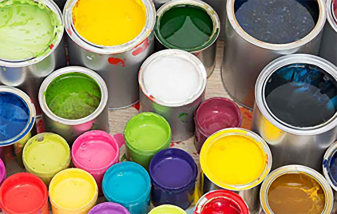
Oct . 08, 2024 18:51 Back to list
Versatile Applications of Redispersible Powder in Modern Construction and Coating Industries
Redispersible powder, often referred to as redispersible polymer powder (RDP), is a crucial additive widely utilized in various industries, particularly in construction, adhesives, and coatings. These fine powders are derived from emulsions of polymers that have undergone a drying process, resulting in a powder that can be easily redispersed in water to form a stable dispersion. This unique property makes redispersible powders highly effective for enhancing the performance of various materials.
The primary function of redispersible powders is to improve the workability and flexibility of cement and gypsum-based products. When these powders are mixed with dry formulations, they facilitate better adhesion, increased elasticity, and enhanced resistance to water, allowing the final product to withstand environmental challenges. The addition of RDPs into mortar mixes, for example, can significantly improve adhesion to substrates, reduce the risk of cracking, and increase overall durability.
One of the most notable applications of redispersible powders is in tile adhesives. Traditional cement-based tiles often face issues such as limited adhesion and flexibility, which can lead to tile failure over time. By incorporating RDPs, manufacturers can create tile adhesives that offer superior bonding strength, flexibility, and resistance to moisture, ensuring a longer-lasting and more reliable installation. This enhancement is particularly beneficial in areas exposed to varying temperature and humidity levels, such as bathrooms and kitchens.
Moreover, RDPs are also widely used in the formulation of exterior insulation and finish systems (EIFS). The inclusion of redispersible powders in these systems allows for improved adhesion to insulation boards and enhanced weather resistance of the finished surfaces. This not only contributes to better thermal performance but also minimizes the risk of water infiltration and subsequent damage, thereby extending the lifespan of the building envelope.
redispersible powder

In addition to construction applications, redispersible powders find uses in the paint and coating industry. The incorporation of RDPs into paint formulations enhances their film-forming properties, resulting in improved gloss, durability, and resistance to abrasion. This makes RDP-enhanced paints suitable for a variety of applications, including residential, commercial, and industrial coatings.
As environmental concerns grow, the demand for more sustainable building materials has led to a focus on green construction practices. Redispersible powders contribute to this trend by allowing for the formulation of low-VOC (volatile organic compound) products, aiming to reduce harmful emissions while maintaining product performance. This shift towards more environmentally friendly options is not only beneficial for health but also aligns with global efforts to create sustainable living spaces.
In conclusion, redispersible powders are vital additives in various industries, particularly in enhancing the performance of construction materials, adhesives, and coatings. Their ability to improve adhesion, flexibility, and durability makes them indispensable in creating high-quality products that can withstand the rigors of different environments. As the construction and coatings industries continue to evolve, the role of redispersible powders is likely to expand, promoting innovation and sustainability in material development.
-
Versatile Hpmc Uses in Different Industries
NewsJun.19,2025
-
Redispersible Powder's Role in Enhancing Durability of Construction Products
NewsJun.19,2025
-
Hydroxyethyl Cellulose Applications Driving Green Industrial Processes
NewsJun.19,2025
-
Exploring Different Redispersible Polymer Powder
NewsJun.19,2025
-
Choosing the Right Mortar Bonding Agent
NewsJun.19,2025
-
Applications and Significance of China Hpmc in Modern Industries
NewsJun.19,2025







